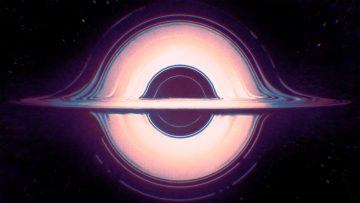George Musser in Quanta:
 In a series of breakthrough papers, theoretical physicists have come tantalizingly close to resolving the black hole information paradox that has entranced and bedeviled them for nearly 50 years. Information, they now say with confidence, does escape a black hole. If you jump into one, you will not be gone for good. Particle by particle, the information needed to reconstitute your body will reemerge. Most physicists have long assumed it would; that was the upshot of string theory, their leading candidate for a unified theory of nature. But the new calculations, though inspired by string theory, stand on their own, with nary a string in sight. Information gets out through the workings of gravity itself — just ordinary gravity with a single layer of quantum effects.
In a series of breakthrough papers, theoretical physicists have come tantalizingly close to resolving the black hole information paradox that has entranced and bedeviled them for nearly 50 years. Information, they now say with confidence, does escape a black hole. If you jump into one, you will not be gone for good. Particle by particle, the information needed to reconstitute your body will reemerge. Most physicists have long assumed it would; that was the upshot of string theory, their leading candidate for a unified theory of nature. But the new calculations, though inspired by string theory, stand on their own, with nary a string in sight. Information gets out through the workings of gravity itself — just ordinary gravity with a single layer of quantum effects.
This is a peculiar role reversal for gravity. According to Einstein’s general theory of relativity, the gravity of a black hole is so intense that nothing can escape it. The more sophisticated understanding of black holes developed by Stephen Hawking and his colleagues in the 1970s did not question this principle. Hawking and others sought to describe matter in and around black holes using quantum theory, but they continued to describe gravity using Einstein’s classical theory — a hybrid approach that physicists call “semiclassical.” Although the approach predicted new effects at the perimeter of the hole, the interior remained strictly sealed off. Physicists figured that Hawking had nailed the semiclassical calculation. Any further progress would have to treat gravity, too, as quantum.
That is what the authors of the new studies dispute.
More here.
